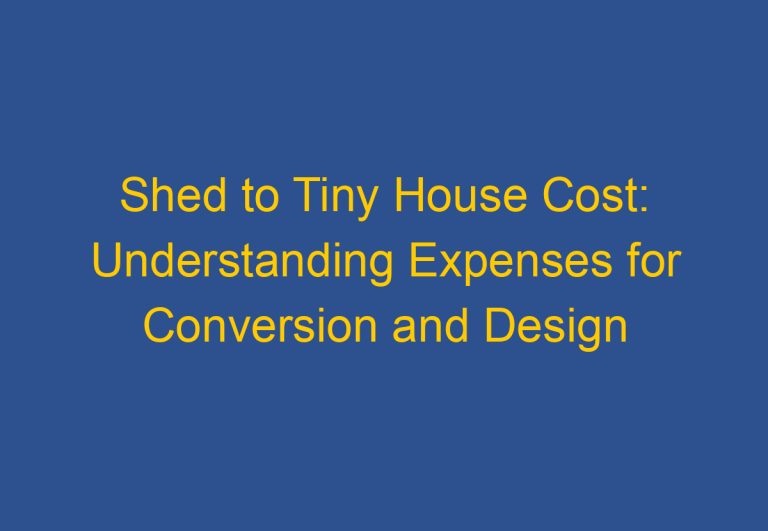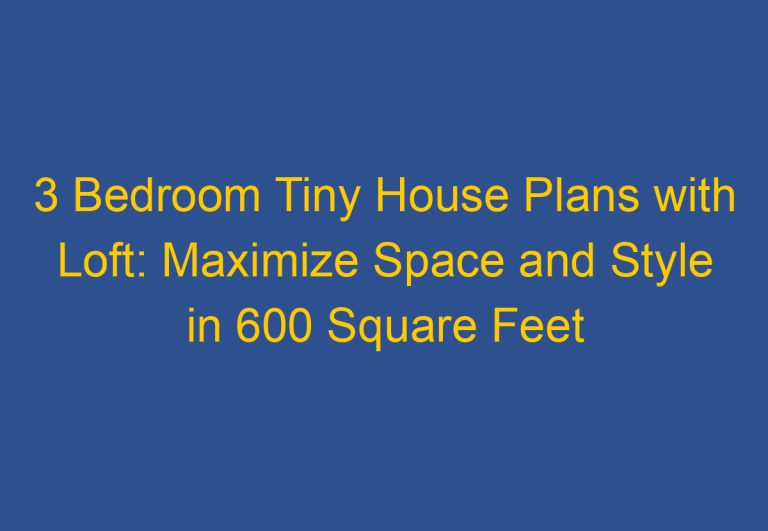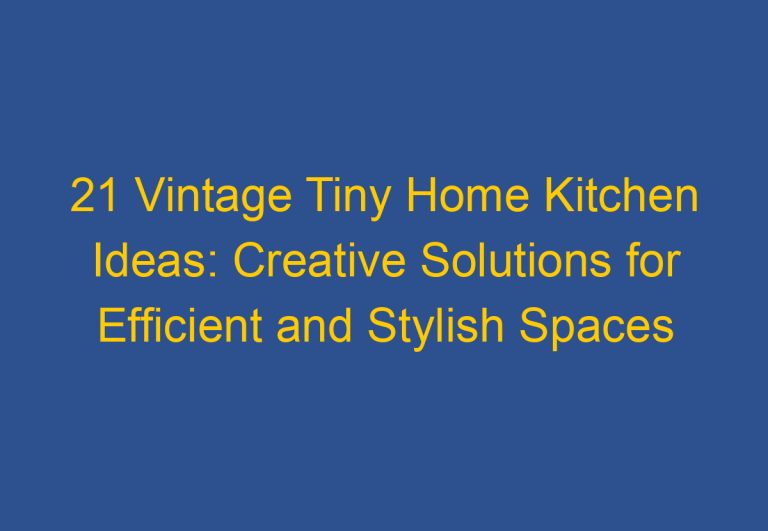12×24 Tiny House Floor Plans: Efficient Designs for Modern Living
12×24 tiny house floor plans are gaining popularity among those looking for efficient living solutions. These plans provide a balance of functionality and comfort, making them ideal for individuals or small families seeking a simplified lifestyle. With innovative layouts, these homes maximize space while maintaining a cozy atmosphere.
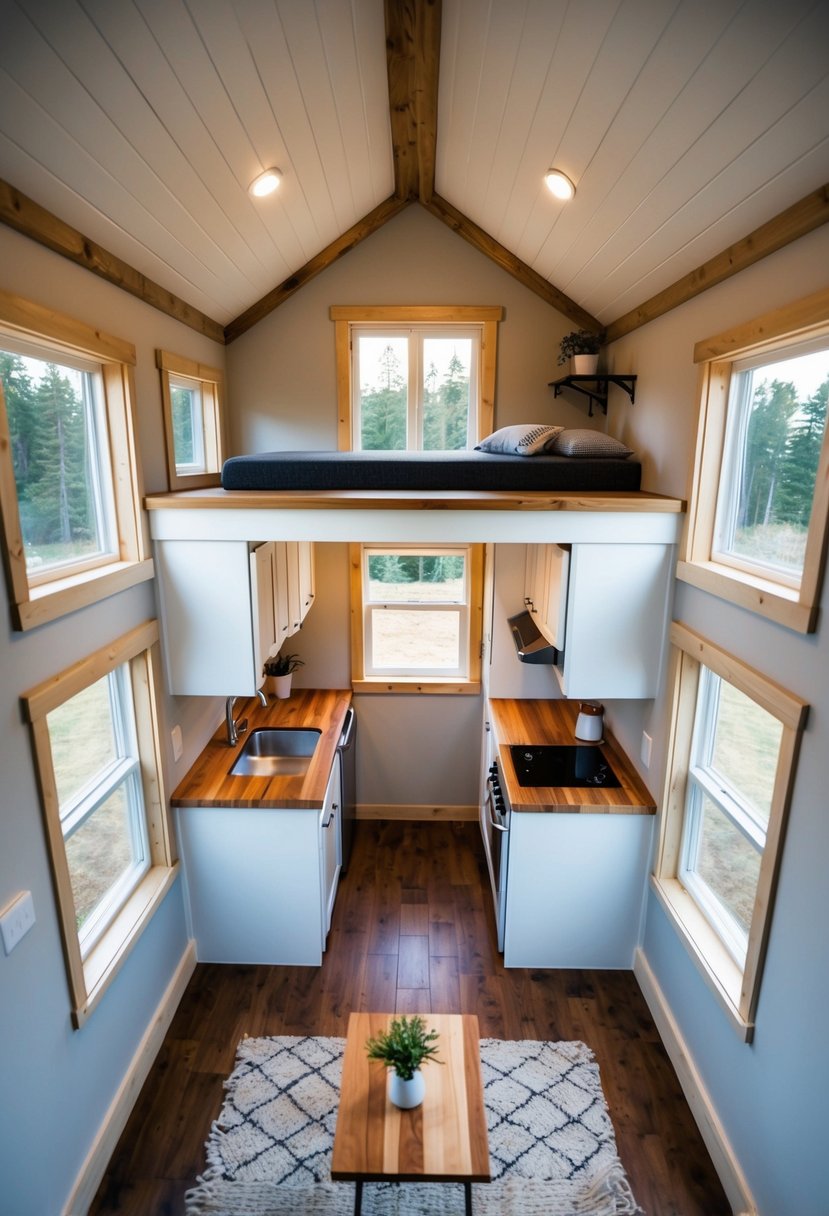
Exploring a variety of design options helps potential homeowners find the perfect fit for their needs. From open-concept living areas to clever storage solutions, 12×24 tiny homes can be customized to reflect personal style and preferences. This adaptability not only promotes a minimalist lifestyle but also contributes to more sustainable living choices.
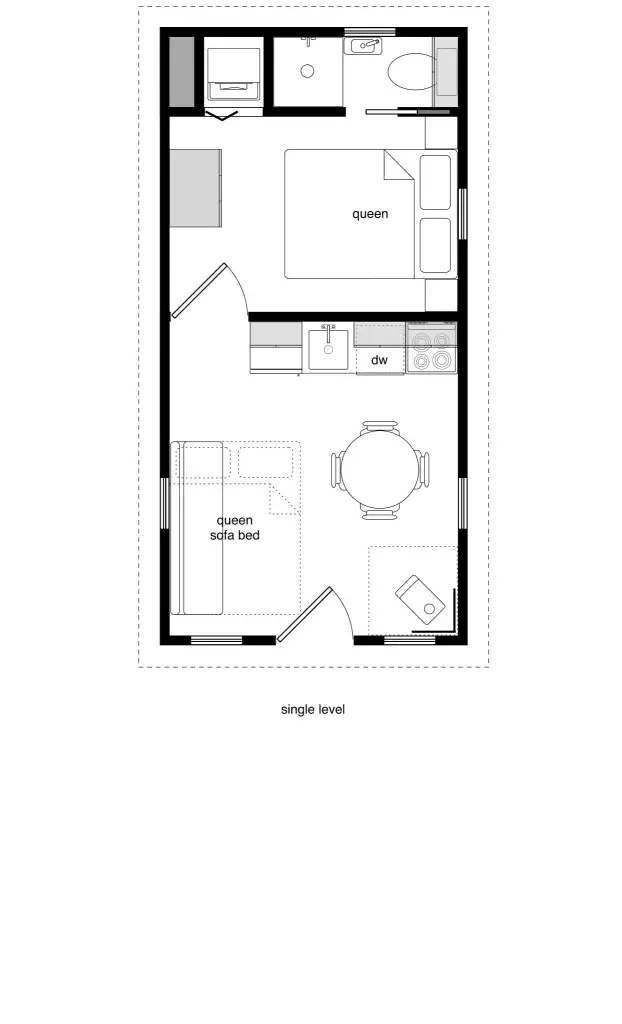
As more people consider downsizing or embracing alternative living arrangements, understanding the advantages of 12×24 tiny house floor plans can inspire creativity and practical decision-making. The journey toward creating a comfortable and efficient home starts with the right design, catering to both aesthetic and functional needs.
12×24 Tiny House Floor Plan
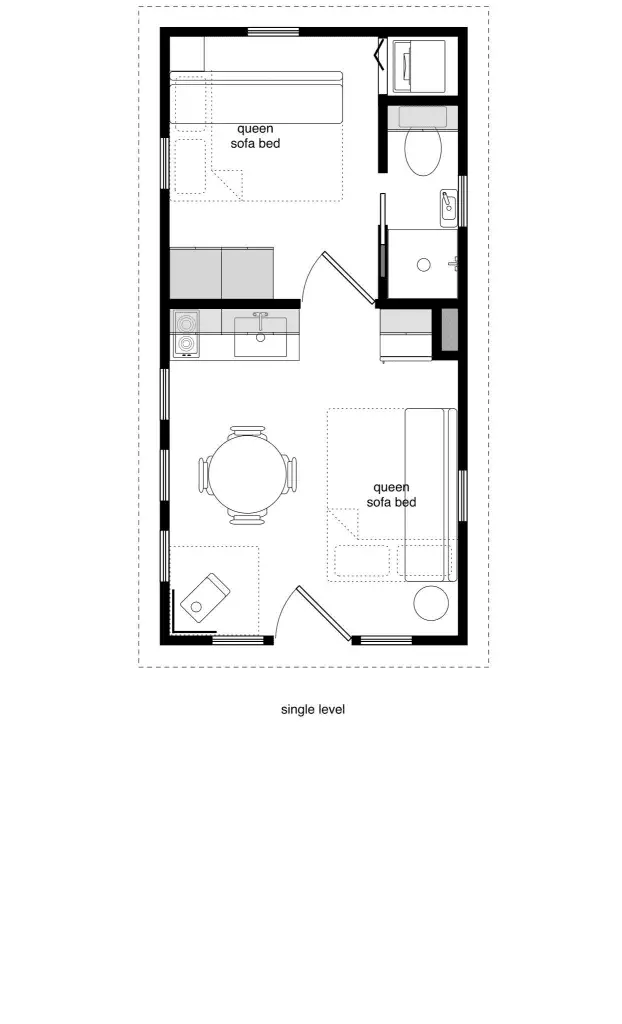
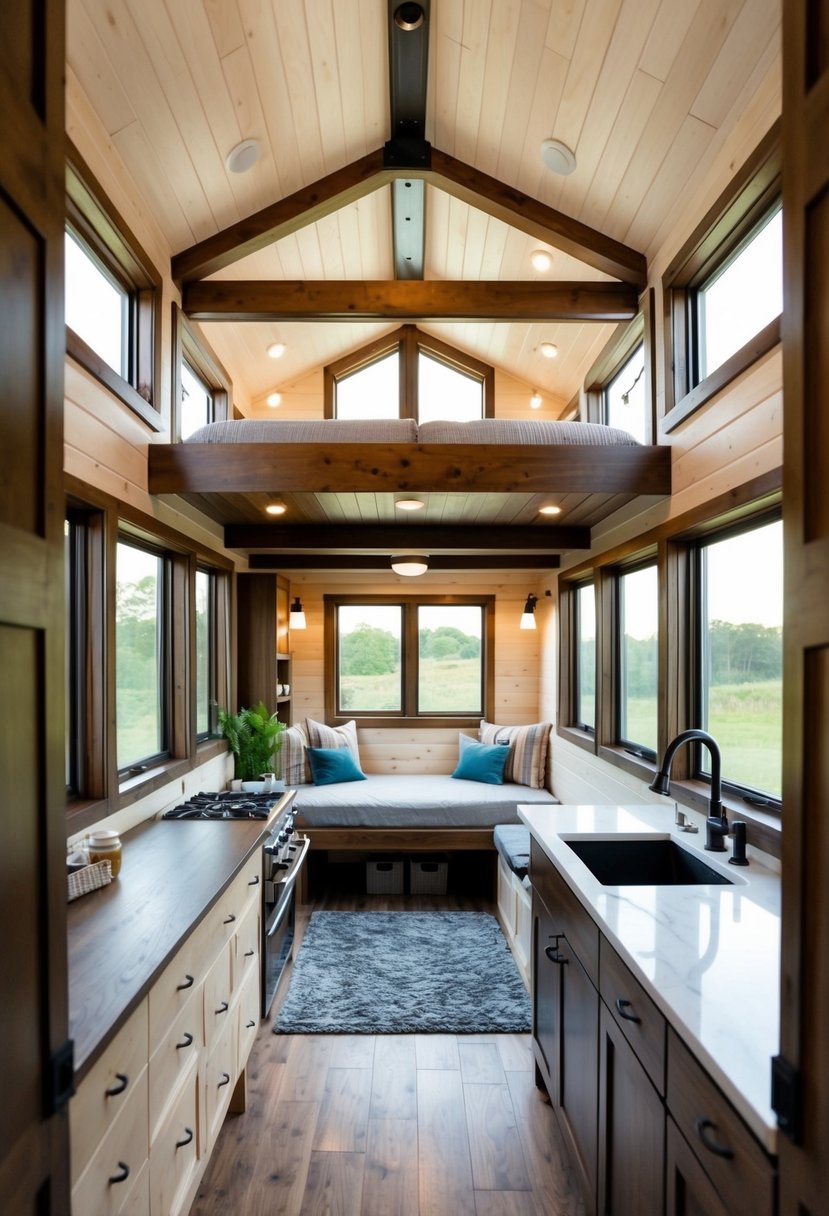
A 12×24 tiny house floor plan typically features a layout that maximizes space efficiency. This size offers a compact living solution that can fit various lifestyles.
Common design elements include:
- Open Spaces: Many plans feature open floor layouts. This creates a feeling of more space and flexibility.
- Loft Areas: A loft can be added for sleeping. This uses vertical space effectively.
- Multifunctional Rooms: Spaces can serve dual purposes. For example, a living area can also function as a dining space.
Example Features
- Living Room: Often includes a seating area and a small entertainment setup.
- Kitchen: Generally equipped with essential appliances in a compact design.
- Bathroom: Usually has a shower, toilet, and sink within a small space.
Cost Considerations
The average cost to build a 12×24 tiny house is around $57,600. This price can vary based on:
- Choice of materials
- Custom features
- Location
Conclusion on Use Cases
Tiny house plans are popular for those looking to downsize or live more sustainably. They appeal to people seeking simplicity while still enjoying modern comforts.
12×24 Tiny House Floor Plan 1 Bedroom


A 12×24 tiny house floor plan with one bedroom is a practical design for individuals or couples. This layout optimizes space while providing essential living areas.
Key Features
- Dimensions: The floor plan measures 12 feet wide by 24 feet long, totaling 288 square feet.
- Bedroom: Typically, the bedroom is positioned at one end, offering privacy and comfort.
- Living Area: The main living space includes a kitchen and seating area, designed to feel open and inviting.
Common Layout Elements
| Area | Description |
|---|---|
| Kitchen | Compact with essential appliances. |
| Living Space | Versatile area for dining and relaxation. |
| Bathroom | Usually includes a shower, toilet, and sink. |
Design Tips
- Storage Solutions: Use built-in shelves and under-bed storage to maximize space.
- Natural Light: Large windows can make the space feel larger and more airy.
- Functional Furniture: Consider multi-use furniture to maintain a clean appearance.
This design accommodates simpler living while maintaining comfort and functionality. With thoughtful planning, it can suit various lifestyles and preferences.
12×24 Tiny House Floor Plan 2 Bedroom
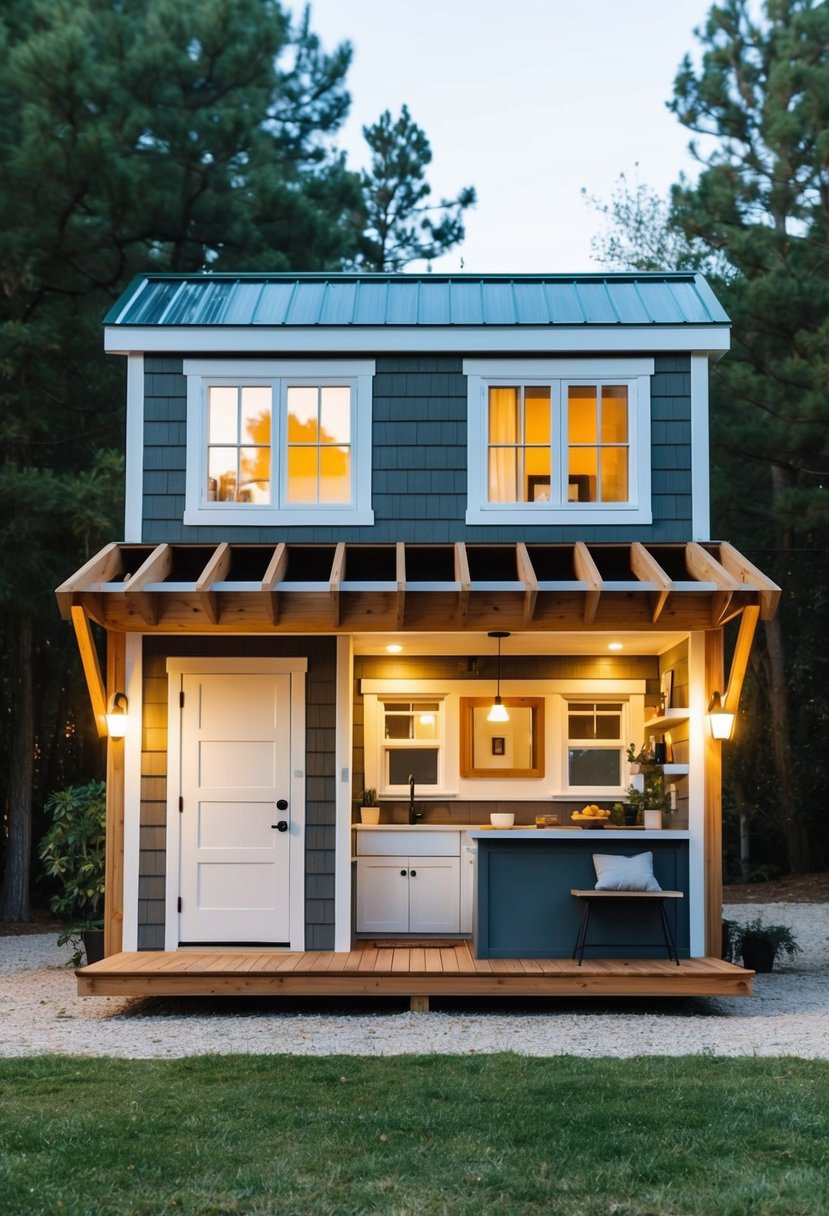
A 12×24 tiny house can effectively accommodate two bedrooms. These plans maximize space while providing comfort.
One popular layout includes:
- Two bedrooms: Each bedroom can fit a full-sized bed and small furniture.
- Open living area: A combined kitchen and living space creates a more spacious feel.
- Functional kitchen: Compact appliances and smart storage solutions are key.
Key Features:
| Feature | Description |
|---|---|
| Bedrooms | Two separate sleeping areas |
| Living Space | Combined area for cooking and relaxing |
| Bathroom | Compact bathroom with shower |
Storage is important in a small home. Examples include:
- Under-bed storage in bedrooms
- Wall-mounted shelves in the living area
- Cabinets in the kitchen
Large windows can enhance the natural light, making rooms feel larger.
A 12×24 tiny house with two bedrooms provides a practical solution for small families, roommates, or guests. It balances functionality and coziness, meeting the needs of those looking to downsize without sacrificing essentials.
Understanding Tiny House Living
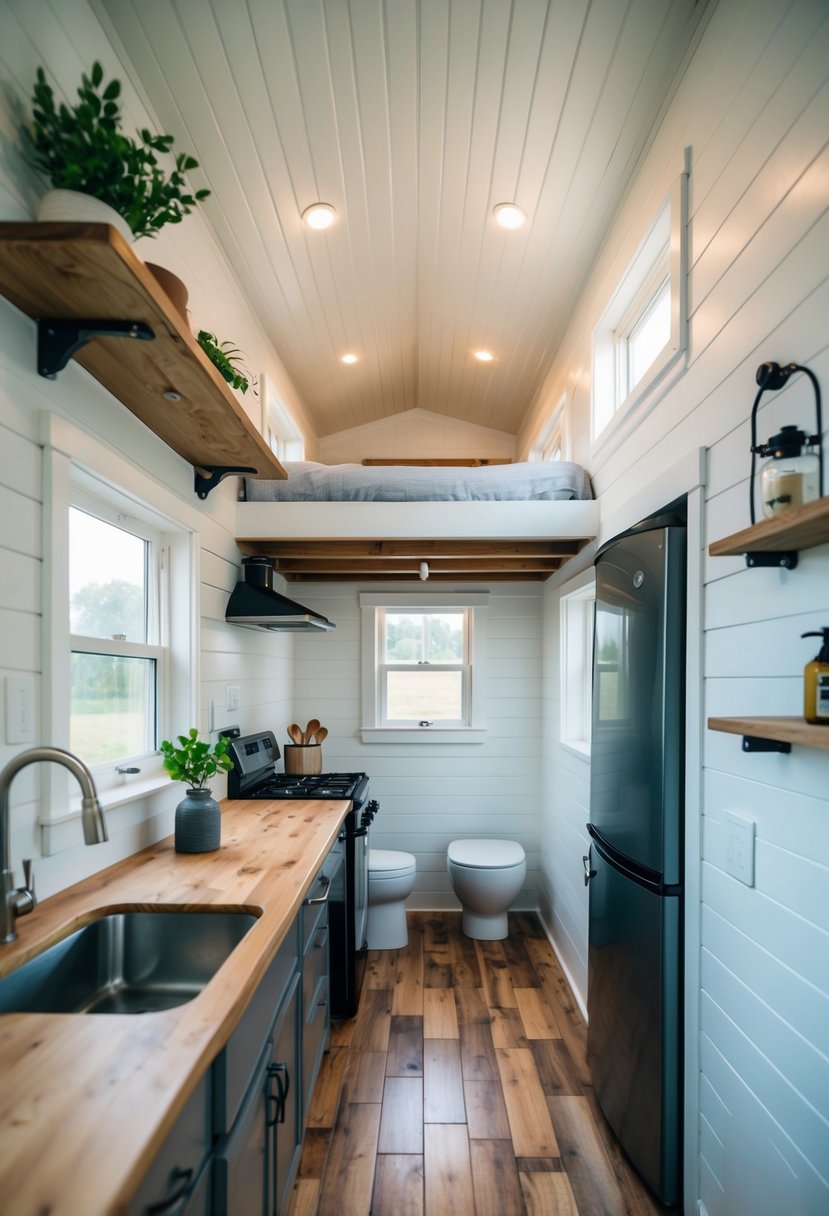
Tiny house living focuses on simplifying life with smaller, more efficient spaces. This lifestyle has unique characteristics that appeal to many individuals and couples who prefer minimalism and sustainability.
Defining a Tiny House
A tiny house is typically defined as a dwelling that measures less than 400 square feet. For example, a 12×24 tiny house is about 288 square feet. These homes can be mobile or stationary, allowing for flexibility in living arrangements. They often include essential features like a bathroom, kitchen, and sleeping area, all designed to maximize space.
Many tiny houses follow eco-friendly building practices and prioritize energy efficiency. Owners often choose to design their homes according to personal tastes, making these spaces not only functional but also unique.
Benefits of a Tiny House
Tiny houses come with several benefits. One of the most significant advantages is affordability. Building a tiny home usually costs less than traditional houses, allowing owners to reduce their mortgage or live without one altogether.
Living in a small space encourages minimalism, which can lead to less clutter and stress. Many individuals report feeling more content and focused after downsizing.
Moreover, tiny houses often have a smaller environmental footprint. Homeowners may use sustainable materials and energy-efficient appliances, contributing to eco-friendly living.
Legal Considerations and Zoning
Legal considerations play a critical role in tiny house living. Zoning laws vary widely by location. Some areas may have restrictions on the size and placement of tiny homes, which affects where they can be parked or built.
Before creating or purchasing a tiny house, it’s essential to check local zoning regulations. Understanding legal consent, permits, and building codes is critical. Some places even offer tiny house villages with specific guidelines for residents.
Planning ahead can help avoid potential legal issues and ensure compliance with local laws.
Design Principles for Tiny Houses
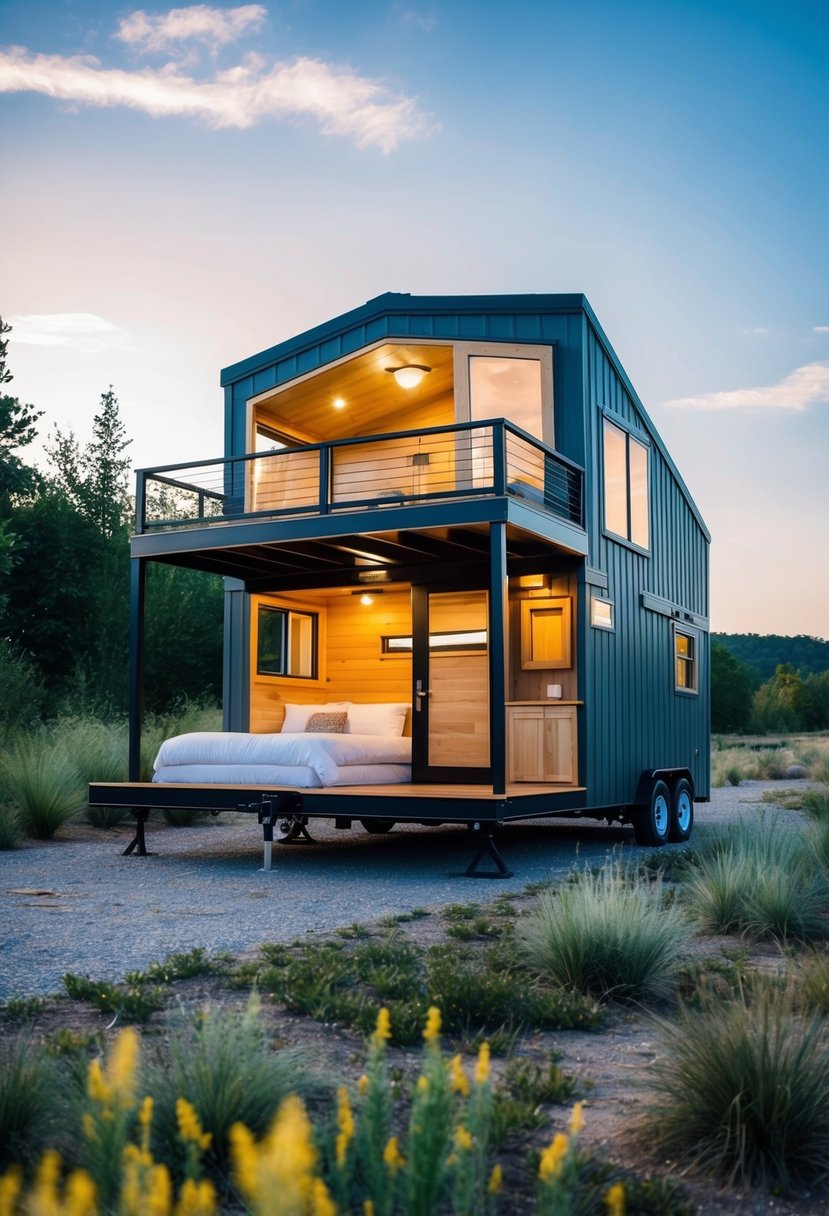
Designing a tiny house requires careful thought to make the most of limited space. Key principles focus on efficient use of space, creating multi-functional areas, and embracing a minimalist aesthetic.
Maximizing Space
Maximizing space is crucial in tiny house design. Effective layouts often incorporate open floor plans, allowing for airflow and movement.
Vertical Storage: Utilizing vertical space is essential. Shelves, cabinets, and hooks can be placed high on walls, freeing up floor area.
Smart Furniture Choices: Folding furniture or built-in pieces can transform rooms. For example, a foldable dining table can serve as both a meal space and a work area.
Natural Light: Incorporating large windows and skylights enhances the feeling of space. Natural light can make small rooms feel larger and more inviting.
Multi-Functional Areas
Multi-functional areas serve more than one purpose, making them vital in tiny houses.
Living Areas: A living room can double as a guest room, with a sofa that converts into a bed. This reduces the need for separate sleeping spaces.
Kitchen Integration: Combining the kitchen and dining area allows for more efficient meal preparation and serving. A kitchen island can be both a counter and a dining space.
Outdoor Access: Adding sliding glass doors can connect indoor and outdoor living. This feature expands the usable area and creates a sense of openness.
Minimalist Aesthetic
A minimalist aesthetic simplifies the space, emphasizing function over excess.
Neutral Color Palette: Light colors can enhance the sense of space. They reflect more light, making rooms feel airy.
Decluttered Spaces: Keeping belongings to a minimum ensures a clean, organized environment. Utilizing hidden storage keeps essentials accessible yet out of sight.
Simple Design Elements: Choosing sleek, simple lines for furniture and decor reduces visual clutter. Quality over quantity is key, allowing for a peaceful, focused atmosphere.
Incorporating these principles can create a tiny house that feels spacious, functional, and comfortable.
Essentials of 12×24 Floor Plans
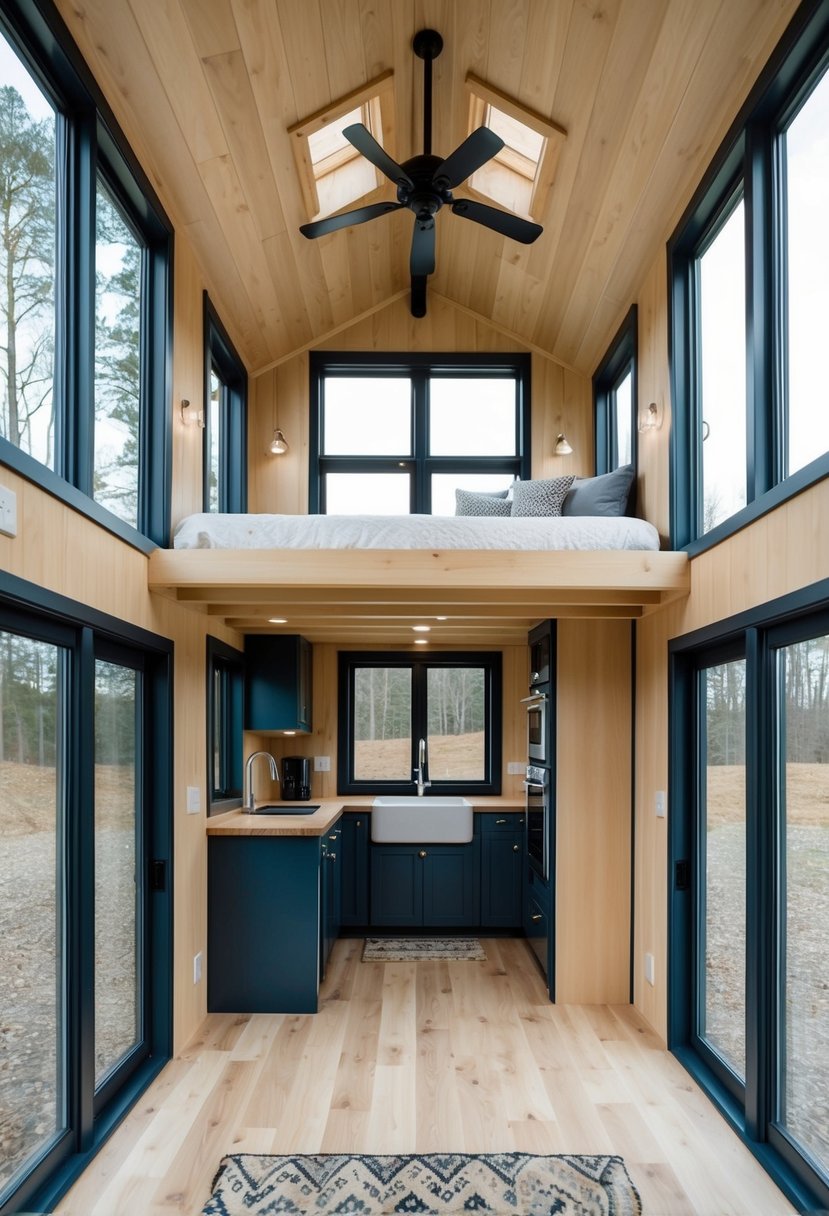
Understanding the key elements of 12×24 tiny house floor plans is essential for effective space usage. This section highlights specific layout options, kitchen and bath designs, and considerations for loft and sleeping areas.
Layout Options
12×24 tiny homes typically offer various layout options to make the most of limited space. Common designs include open floor plans that combine living and kitchen areas, allowing for better flow and movement.
Popular layouts:
- Living Room-Kitchen Combo: This arrangement maximizes space by integrating seating and cooking areas.
- Separate Bedroom and Bath: Some designs include partitioned spaces for added privacy and comfort.
Designers often use multifunctional furniture, such as fold-out tables or Murphy beds, to optimize space. This flexibility is crucial for creating a cozy and practical living environment.
Kitchen and Bath Design
The kitchen and bath in a 12×24 tiny house need to be efficient and functional. Compact appliances, like mini fridges and stovetops, are common choices, helping to save space without compromising utility.
Important kitchen features:
- Storage Solutions: Cabinets that reach to the ceiling and pull-out drawers can maximize under-utilized space.
- Countertop Space: Including an extendable countertop can provide extra preparation space when needed.
In the bathroom, shower stalls instead of full bathtubs help save space. A combination toilet and sink is another smart option that optimizes functionality without requiring excessive room.
Loft and Sleeping Areas
Loft spaces in 12×24 tiny homes are often used for sleeping, maximizing the vertical area for more living space downstairs. This design choice enables better use of floor plans, allowing for cozy sleeping nooks.
Key details for loft areas:
- Access: A well-placed ladder or stairs ensures easy and safe access to the loft.
- Ventilation: Roof windows or vents can keep the space comfortable by providing airflow.
Sleep area designs often incorporate built-in storage to keep the sleeping space organized and clutter-free. This thoughtful planning ensures that the home remains inviting and functional, even in its limited space.
Materials and Construction
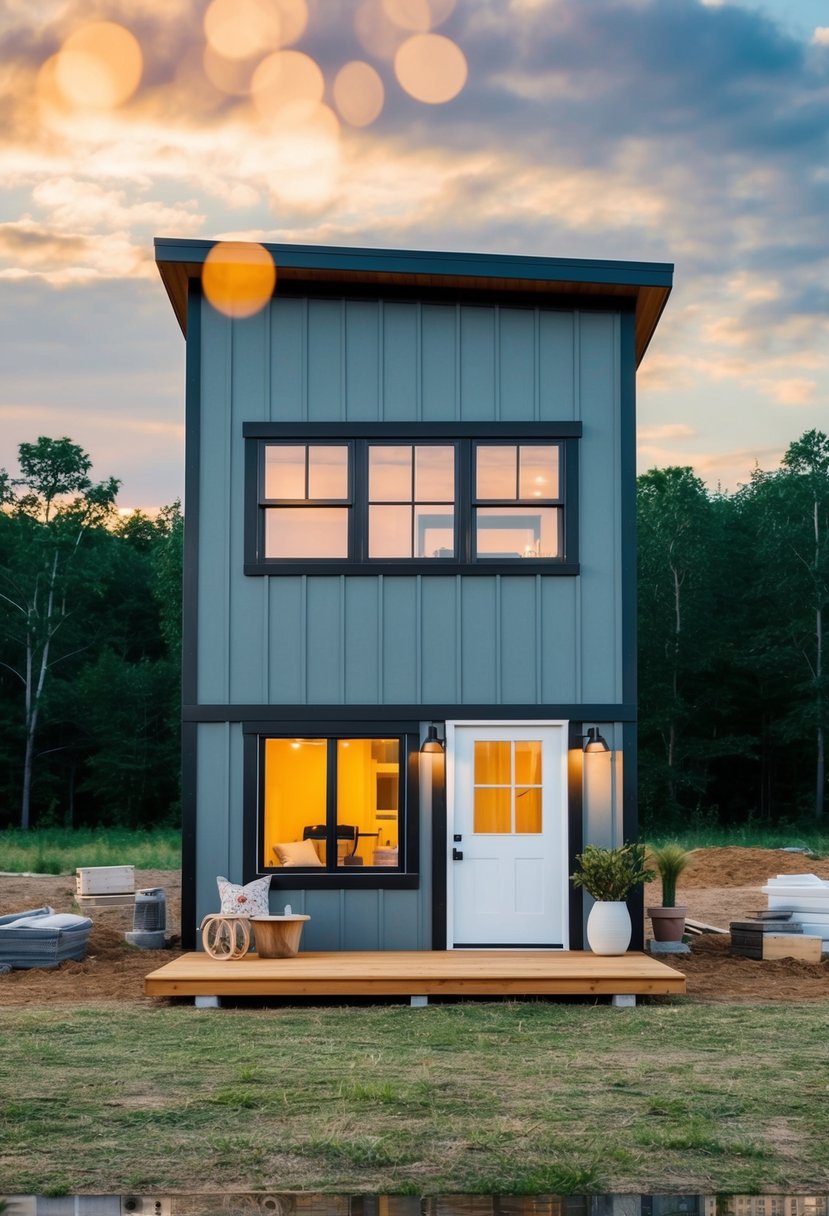
Construction for a 12×24 tiny house requires careful selection of materials and methods to ensure durability and efficiency. Understanding the key components can help in creating a sustainable and comfortable living space.
Choosing Sustainable Materials
Selecting the right materials plays a significant role in the construction of a tiny house. Many builders opt for sustainable options to reduce their environmental impact.
- Wood: Using reclaimed wood helps to minimize deforestation. It can also add a unique character to the home.
- Plywood: Often chosen for walls and flooring, plywood is strong and versatile.
- Insulation: Materials like sheep’s wool or recycled denim provide excellent insulation, keeping the house warm in winter and cool in summer.
Choosing sustainable materials not only benefits the environment but also enhances the overall efficiency of a tiny house.
Construction Methods
The construction methods for a 12×24 tiny house can vary, but certain techniques are common. Each method focuses on maximizing space while ensuring sturdiness.
- Foundation: Many tiny houses are built on a trailer, which makes them mobile. Concrete piers are another option for stationary homes.
- Framing: A standard framing structure with 2×4 or 2×6 lumber is widely used. This offers flexibility for interior layouts.
- Roofing: A gabled roof is common as it allows for better drainage and adds height for loft spaces. Metal roofing is a popular choice for its durability.
These methods help ensure that the tiny house is built to last while making the most of the available space.
Insulation and Weatherproofing
Proper insulation and weatherproofing are essential elements in tiny house construction. They keep the living space comfortable regardless of weather conditions.
- Insulation Types: Spray foam insulation is highly effective, sealing gaps and providing thermal resistance. Alternatively, fiberglass batts are a more affordable option.
- Weatherproofing: Installing vapor barriers helps prevent moisture buildup, which can lead to mold and decay.
- Windows and Doors: Choosing energy-efficient windows and properly sealing doors can significantly reduce heating and cooling costs.
Effective insulation and weatherproofing are key to maintaining a cozy and energy-efficient tiny home.
Customization and Personalization
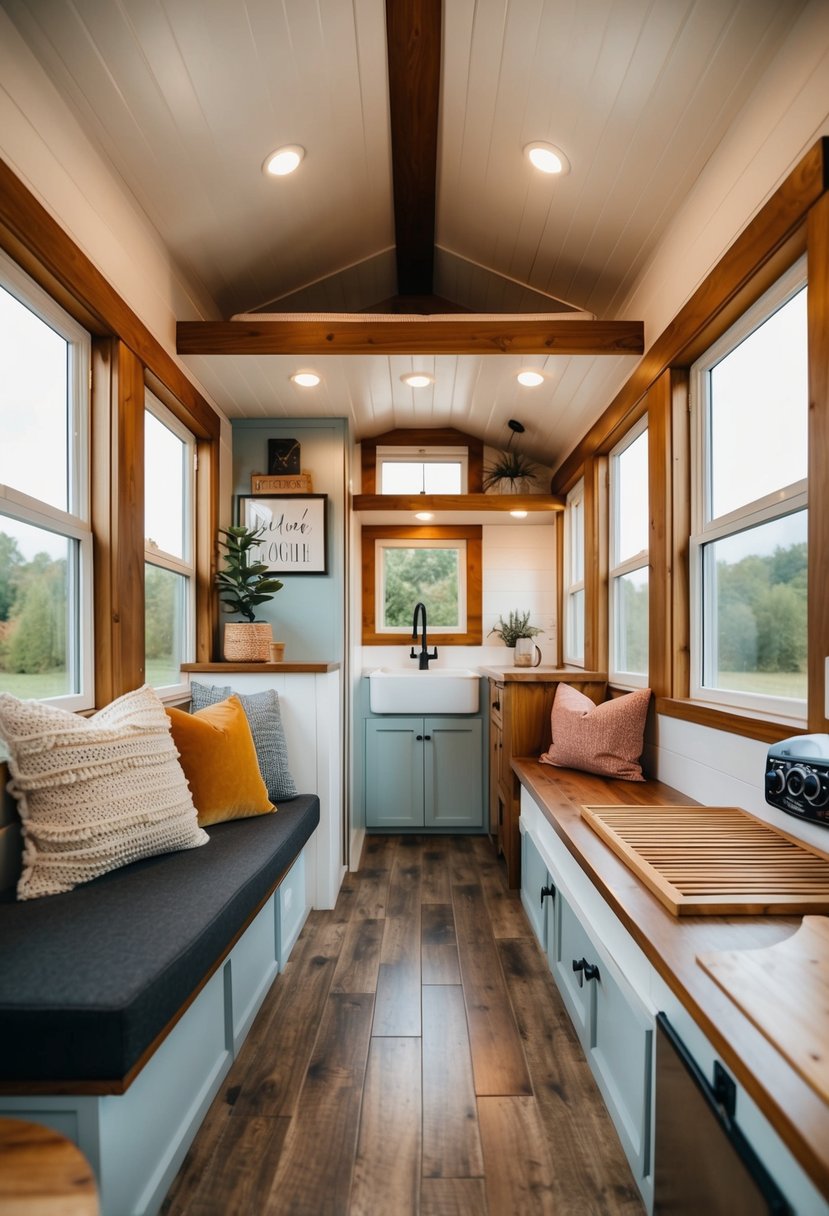
A 12×24 tiny home offers many ways to tailor its look and function to fit personal needs. Owners can make choices that reflect their style and lifestyle, from exterior design to interior features and advanced technology.
Exterior Design Choices
When designing the exterior of a 12×24 tiny house, various options are available. Homeowners can select materials like wood, metal, or vinyl for siding. The roof design can be traditional, gable, or even a modern flat top.
Color choices are almost limitless. Earthy tones often blend with nature, while vibrant colors can add personality. Adding shutters, window boxes, and even outdoor lighting can enhance curb appeal.
Landscaping also plays a role. Simple gardens or decks can extend outdoor living spaces. These design choices help create a welcoming environment.
Interior Decor and Finishing
The interior is where personalization shines. Floor plans allow for an open layout or more defined spaces. Homeowners can choose from different types of flooring like hardwood, laminate, or tile based on their style and maintenance preferences.
Cabinets and storage solutions are key considerations. Custom-built furniture can maximize space and functionality. A choice of paint colors, wall finishes, and fixtures can make the space feel unique.
Lighting plays a big part in setting the mood. From bright overhead lights to soft accent lighting, fixtures can be stylish and functional. Rugs and artwork can add warmth and character.
Technology and Smart Homes
Incorporating technology can enhance the tiny home experience. Smart home systems allow for efficient control of lighting, heating, and security. Devices like smart thermostats can save energy and improve comfort.
In addition, energy-efficient appliances can be chosen for the kitchen and bathroom, fitting well within the limited space. Homeowners can also install solar panels for sustainable energy.
Wi-Fi readiness is essential for remote work or entertainment needs. These tech upgrades can help make a 12×24 tiny house comfortable and modern, blending convenience with personal living.
Budgeting Your Build
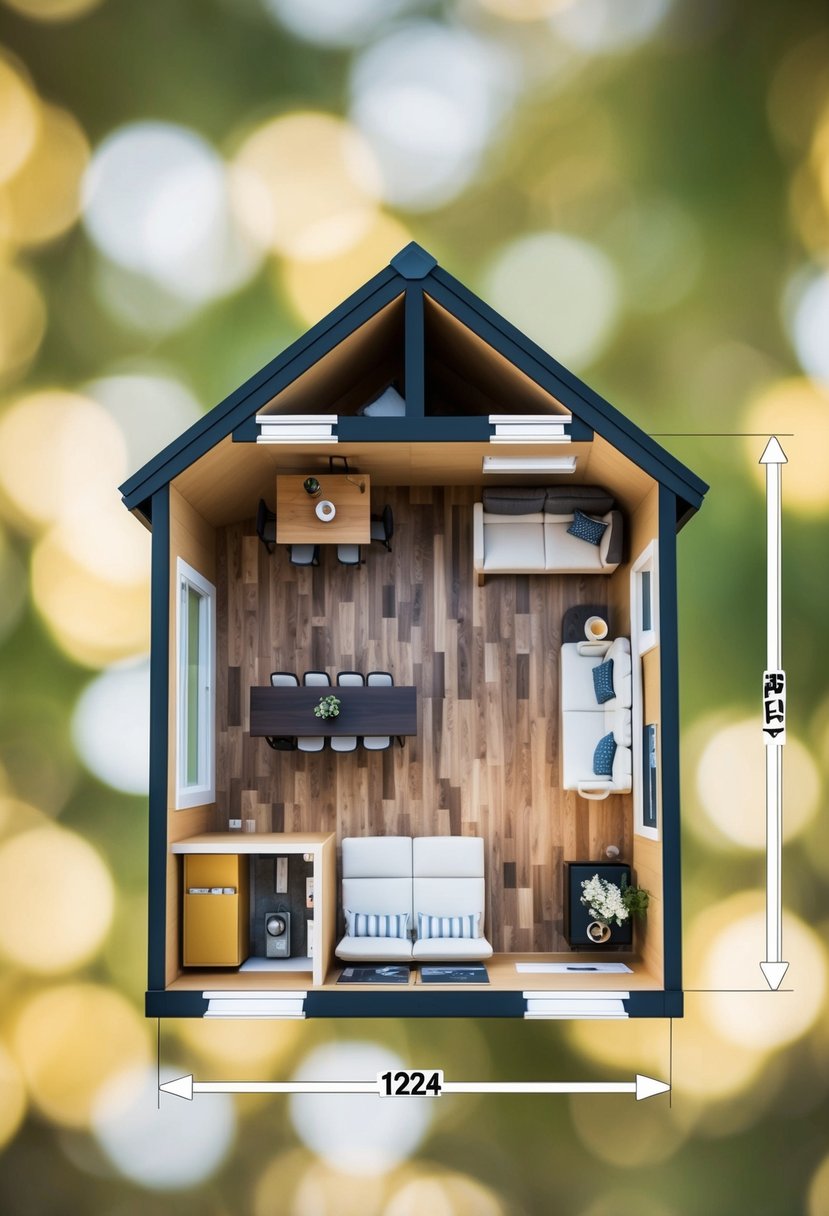
Creating a budget for a 12×24 tiny house is crucial for staying on track during the building process. By estimating costs and finding affordable materials, builders can save money while achieving their design goals.
Cost Estimation
Estimating costs for a 12×24 tiny house involves several key factors. First, the foundation and framing usually range from $5,000 to $10,000. Next, utilities, including plumbing and electrical work, can add another $3,000 to $5,000.
Interior finishes, like flooring and fixtures, may cost between $4,000 and $8,000. Additionally, purchasing appliances can range from $1,000 to $3,000.
Here’s a basic cost overview:
| Item | Estimated Cost |
|---|---|
| Foundation & Framing | $5,000 – $10,000 |
| Utilities | $3,000 – $5,000 |
| Interior Finishes | $4,000 – $8,000 |
| Appliances | $1,000 – $3,000 |
| Total Estimated Cost | $13,000 – $26,000 |
Finding Affordable Materials
Finding affordable materials is essential to keep the project costs down. Starting with local suppliers can offer significant savings. They often have lower prices, and the reduced shipping costs can help.
Consider using reclaimed materials such as wood and fixtures. These options not only save money but also add character to the home.
Online marketplaces are another resource for budget-friendly materials. Websites like Craigslist or Facebook Marketplace often list unwanted supplies at discounted prices.
Additionally, taking advantage of bulk purchase discounts from suppliers can further reduce expenses. By carefully sourcing materials, builders can maximize their budget without compromising quality.
Legal Guidelines and Compliance
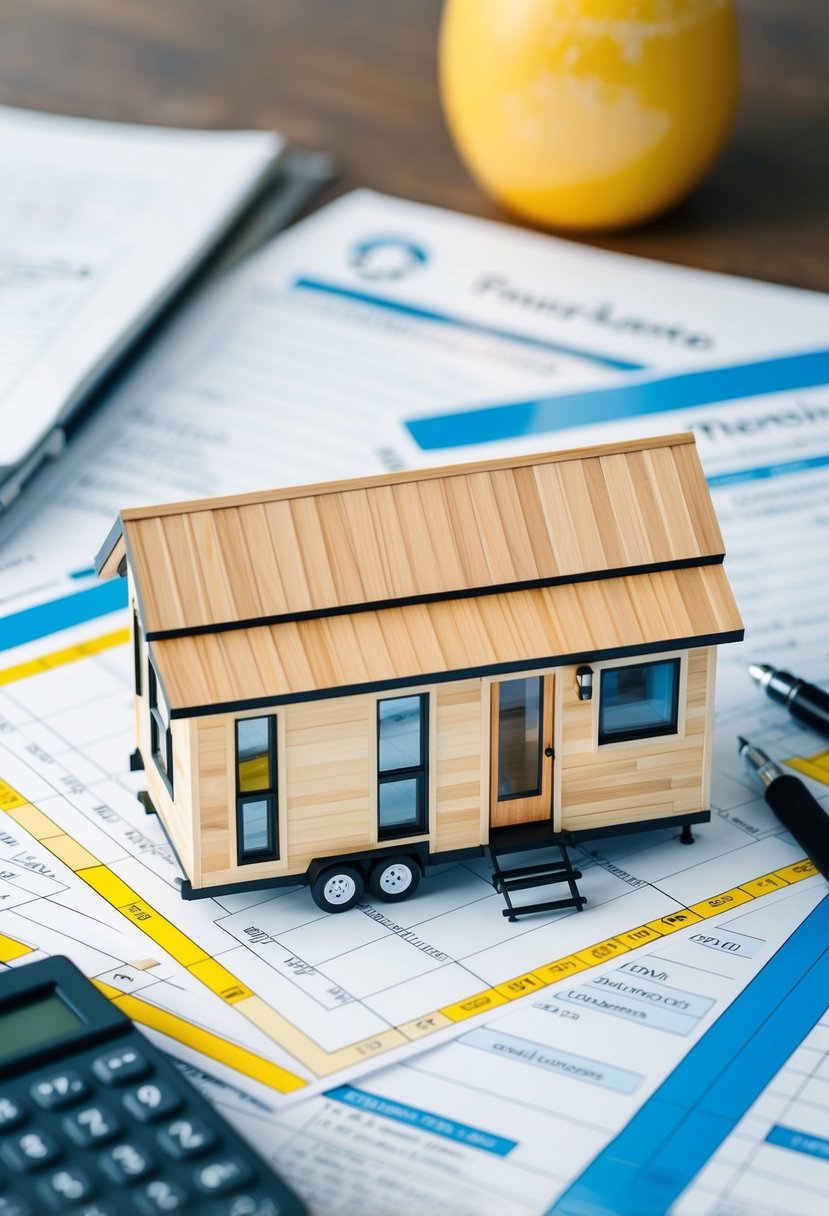
Understanding the legal aspects of building a 12×24 tiny house is essential. This includes the permitting process and building code navigation to ensure compliance and avoid legal issues.
Permitting Process
Before starting any construction, it’s important to obtain the necessary permits. The requirements can vary significantly based on location. Builders should check with the local zoning office for specific guidelines.
Typically, the process includes:
- Application Submission: Fill out the required forms and provide necessary documents.
- Plan Review: Local authorities will review the submitted plans for compliance with zoning and safety regulations.
- Approval and Fees: Pay any associated fees upon approval. This step may also require modifications to meet codes.
- Inspections: At various stages, local officials will inspect the construction to ensure compliance with the approved plans.
Staying informed about local regulations helps avoid delays and additional costs.
Navigating Building Codes
Building codes are crucial rules ensuring safety and adherence to regulations. Understanding these codes can be complex but is necessary for a successful project.
Key points to consider include:
- Local Regulations: Codes differ between towns and cities, affecting everything from structural integrity to materials used.
- Safety Standards: These guidelines ensure the tiny house will withstand environmental conditions.
- Utility Hookups: If connecting to local utilities, regulations concerning plumbing and electricity may apply.
It may also be wise to consult with a professional to navigate these regulations effectively. This ensures compliance and reduces the risk of fines or redesigns later in the project.
Resource Integration
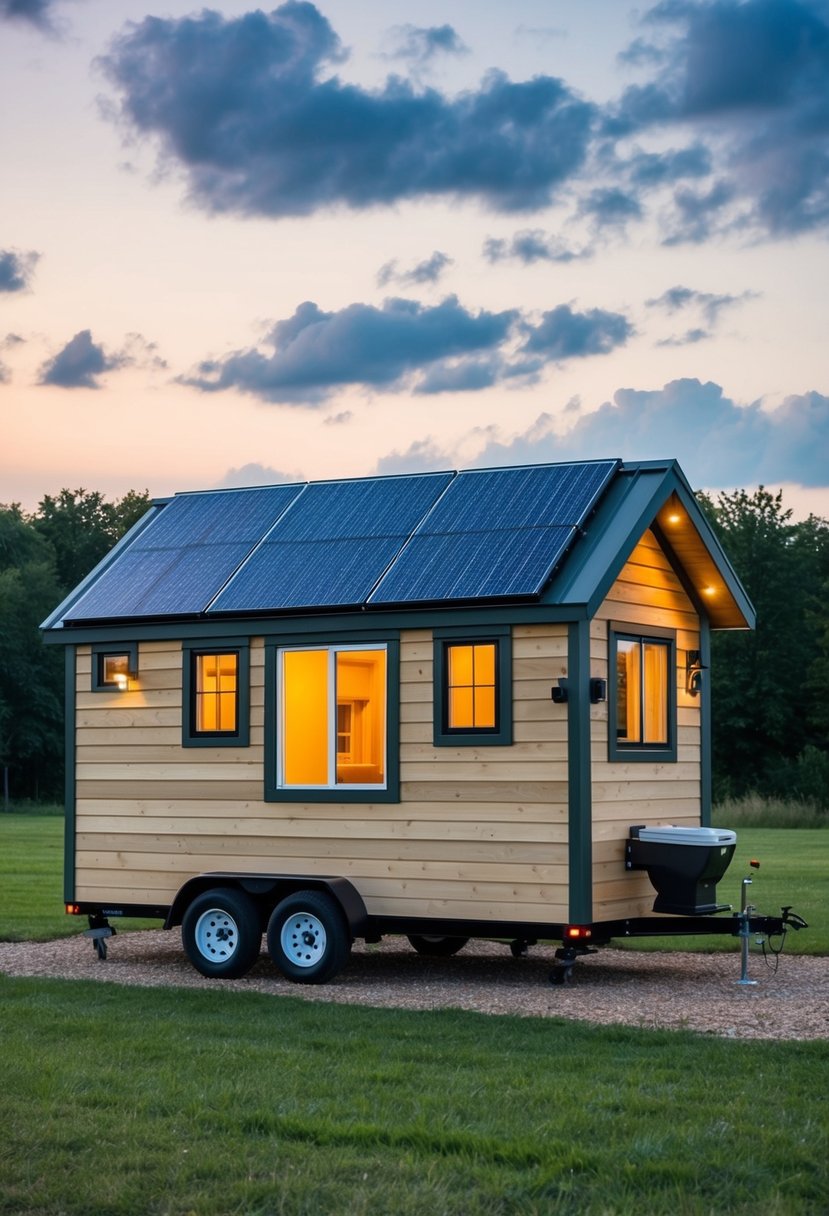
Integrating various resources can greatly enhance the design, planning, and construction of 12×24 tiny houses. By utilizing online platforms, individuals can gain access to valuable information, plans, and community support that simplifies the building process.
Utilizing Online Platforms
Online platforms are essential for anyone interested in 12×24 tiny house floor plans. Many websites offer free resources, including blueprints and design templates.
For example, laoisenterprise.com provides a variety of downloadable guides tailored to tiny home construction. These resources can help users visualize layouts that maximize space effectively.
Social media groups and forums also allow users to connect with others who have experience building tiny homes. By sharing tips and experiences, individuals can gain insights into challenges and solutions.
Using these online resources not only facilitates planning but also fosters a sense of community among tiny house enthusiasts.
Preparing for Tiny House Living
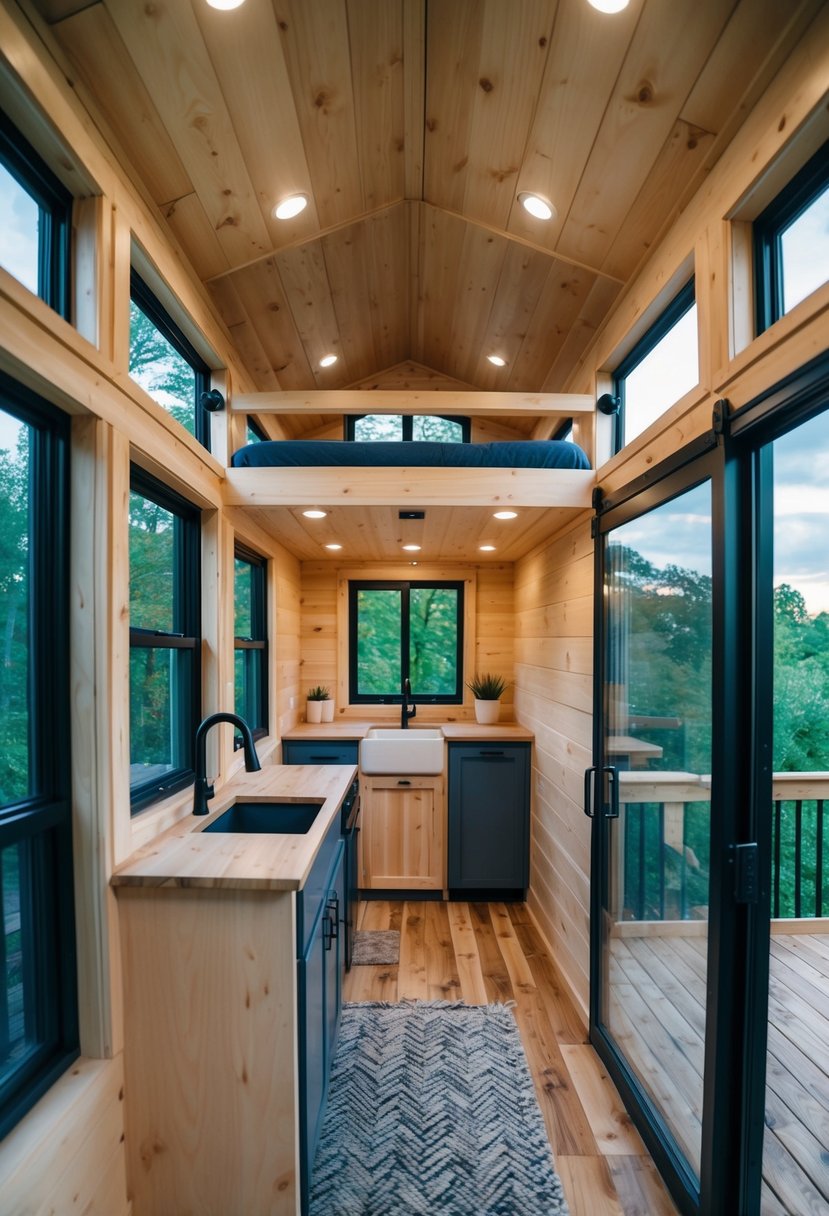
Preparing for tiny house living requires a shift in mindset and practical adjustments. Focusing on what is truly essential is critical for a successful transition. The following areas are key in this process.
Downsizing Possessions
Downsizing is the first step in preparing for tiny house living. This involves evaluating all belongings and determining what is truly needed.
- Clothes: She should sort by seasons and keep versatile pieces.
- Furniture: He must choose multifunctional furniture that fits the space.
- Sentimental Items: They should limit these to a few cherished pieces.
Using the “one in, one out” rule can help maintain balance. If something new comes in, something old should go out.
To make downsizing easier, creating lists can keep track of what to keep, donate, or discard. This approach allows for a smoother transition, ensuring her new space only contains valuable and necessary items.
Embracing a Simplified Lifestyle
Embracing a simplified lifestyle is the essence of tiny house living. This lifestyle pushes for mindfulness in daily activities and spending.
- Budgeting: He should create a budget that limits unnecessary expenses.
- Minimalism: She can focus on experiences rather than material goods.
- Sustainable Living: They can explore eco-friendly practices like composting or using solar power.
Finding joy in simplicity is important. This mindset fosters creativity with limited resources.
By prioritizing time with loved ones and enjoying nature, life can feel fuller. Embracing this lifestyle can lead to greater satisfaction without the clutter and chaos.
Ownership and Maintenance
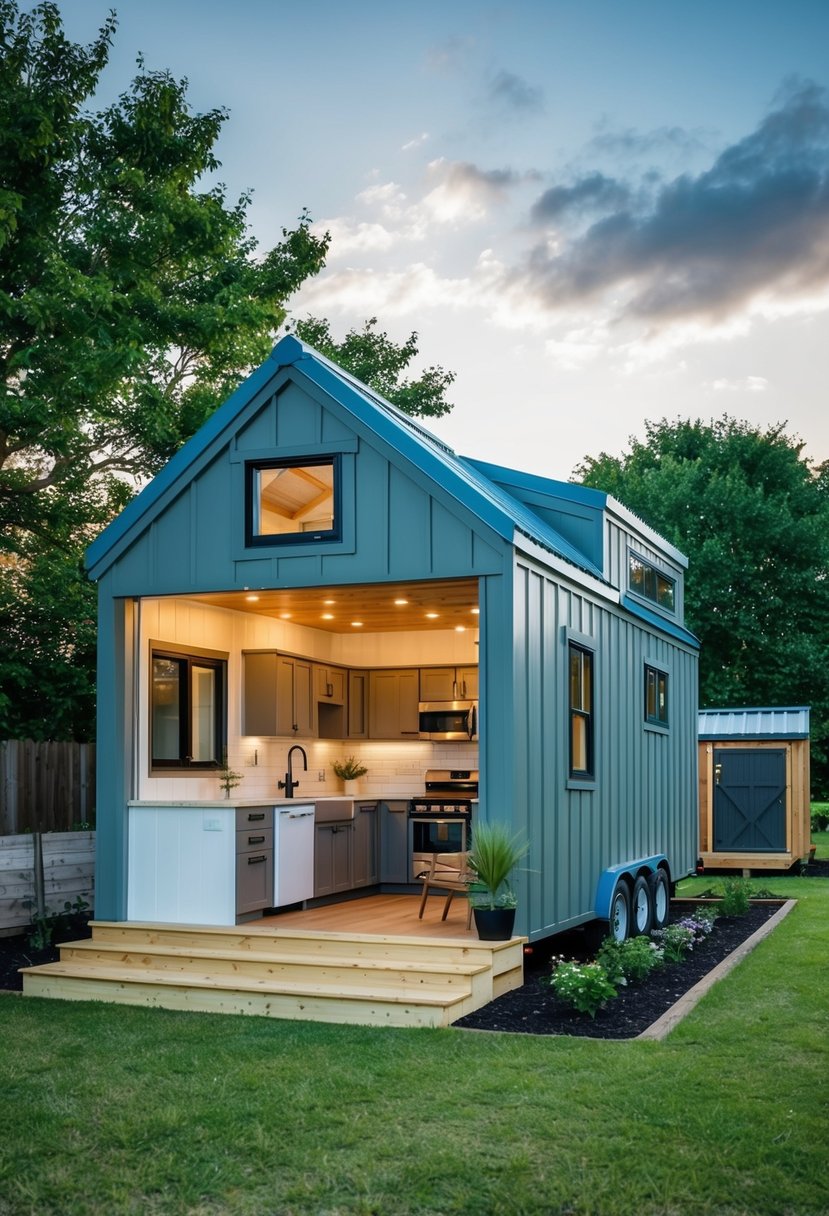
Owning a 12×24 tiny house comes with unique needs for maintenance and upkeep. Regular care ensures the home remains in good condition over time and supports sustainable living.
Routine Upkeep
Routine maintenance is vital for preserving the value of a tiny house. Homeowners should routinely inspect areas prone to wear and tear. This includes checking for leaks, especially in the roof and around windows.
Key tasks include:
- Cleaning gutters to prevent water damage.
- Repainting or staining wood surfaces every few years to protect against the elements.
- Inspecting insulation to maintain energy efficiency.
Regular cleaning inside and out keeps the space inviting and reduces long-term issues. Keeping appliances and plumbing in good working order also promotes efficient living.
Long-Term Sustainability
Focusing on long-term sustainability helps extend the life of a 12×24 tiny house. Choosing eco-friendly materials during construction can make a difference.
Consider these sustainable practices:
- Install energy-efficient appliances to reduce energy consumption.
- Use reclaimed materials where possible for building and decorating.
- Implement rainwater harvesting systems to conserve water.
Investing in high-quality roofing and siding can prevent issues related to water damage. Regular maintenance checks help ensure that systems are functioning properly. This proactive approach leads to a sustainable and comfortable living environment.


